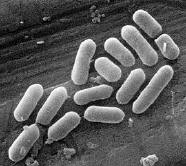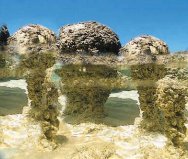|
There
have been 5 major extinctions in the Phanerozoic Eon and minor die offs.
The die offs appear to follow 26 million year periods and may be the
result of periodicity in the Sun's activity or some other periodic
phenomena.
> mass extinctions are regular but more random.
> the most recent event
occurred at
the K-T boundary (Cretaceous - Tertiary) about 65 million Y ago and it
appears that a large asteroid is to blame.
Iridium, Pemex, Yucatan, Cooling Climate,
> the great
Permian
extinction, occurred approximately 250 million years was the most severe
(Erwin, 1993), killing off 77-96% of marine animals , 77% of the tetrapod
families.
> the trilobites became extinct and the number of brachiopods. mollusks were
reduced to a level from which they have never recovered.
Dinosaurs evolved from this event onwards
> David Raup of the University of Chicago has said
"If these estimates are
even reasonably accurate, global biology (for higher organisms at least)
had an extremely close brush with total destruction".
> severe and prolonged global glaciation and by the formation of the super
continent Pangea, as well as salinity fluctuation and regression of sea
levels, which reduced available areas of shallow epicontinental habitat
> around this time enough lava to cover the whole world to a depth of
about 8m gushed from a series of volcanoes in Siberia. This level of
volcanic activity with associated gaseous emissions, could be responsible
for the P-T extinctions, however there remains substantial problems with
the precise dating of these processes
Next >>>>>>>
|











